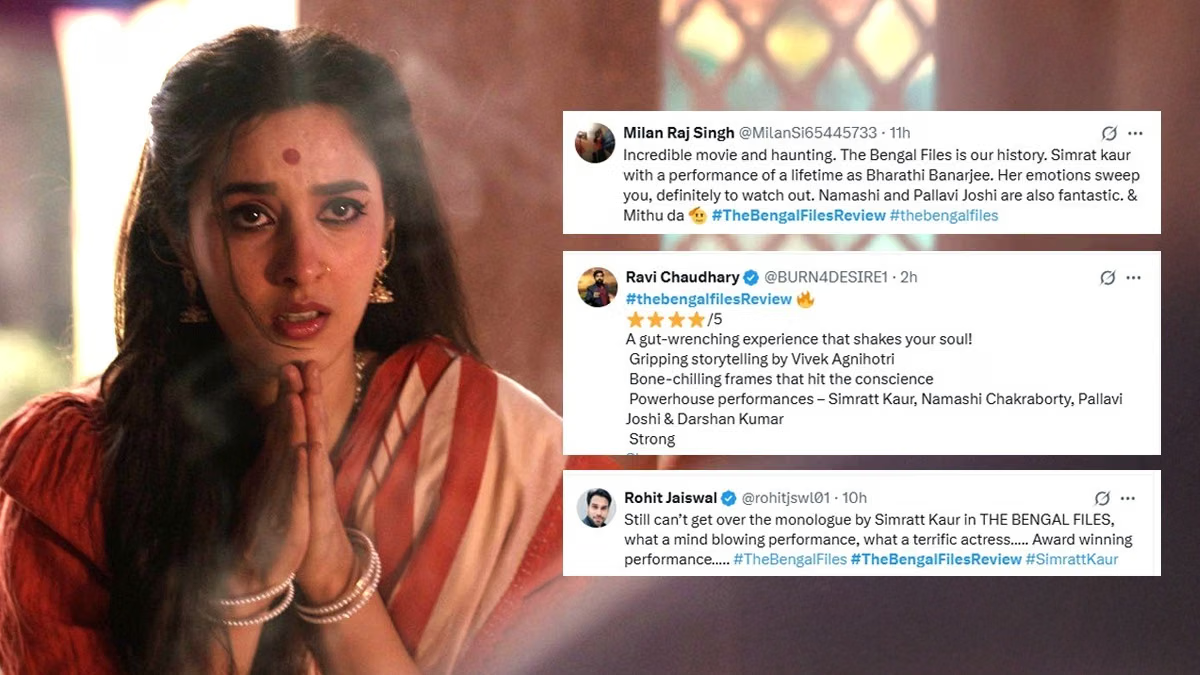
Vivek Ranjan Agnihotri’s The Bengal Files is not just a film—it’s a cinematic excavation of a chapter in Indian history that has long remained buried beneath political discomfort and cultural silence. As the third installment in Agnihotri’s Files trilogy, following The Tashkent Files and The Kashmir Files, this film tackles the communal violence of pre-Partition Bengal with unflinching intensity. Released on September 5, 2025, The Bengal Files has already sparked widespread debate, earning both praise and criticism for its bold storytelling and provocative themes.
Set across two timelines—1946 Bengal and present-day Murshidabad—the film attempts to bridge historical trauma with contemporary unrest. It opens with a dramatized debate between Lord Mountbatten, Jawaharlal Nehru, Muhammad Ali Jinnah, and Mahatma Gandhi, laying the ideological groundwork for the Partition. From there, the narrative shifts to a modern-day investigation led by CBI officer Shiva Pandit (Darshan Kumar), who is tasked with solving the mysterious disappearance of a Dalit girl named Gita Mandal.
A Dual Narrative with Emotional Weight
The film’s structure is ambitious, weaving together historical events like Direct Action Day and the Noakhali riots with a present-day political thriller. Shiva’s investigation leads him to Bharti Banerjee (Pallavi Joshi), a 90-year-old woman suffering from dementia, whose fragmented memories become the key to unlocking the past. Through her recollections, the audience is transported to a Bengal ravaged by communal violence, ideological clashes, and the slow unraveling of a society on the brink of Partition.
Simrat Kaur Randhawa plays the younger Bharti with quiet intensity, portraying a woman who witnesses unspeakable horrors yet refuses to surrender her ideals. Her chemistry with Eklavya Sood, who plays Amarjot Arora, adds emotional depth to the historical segments. Their relationship, rooted in Gandhian values and secular hope, stands in stark contrast to the chaos around them.
Performances That Anchor the Chaos
The ensemble cast delivers powerful performances across the board. Pallavi Joshi, as the elder Bharti, is haunting in her portrayal of a woman torn between memory and madness. Her scenes with Darshan Kumar are among the film’s most emotionally charged, especially as she relives the trauma of 1946.
Anupam Kher’s portrayal of Mahatma Gandhi is restrained yet impactful, capturing the leader’s moral dilemmas and philosophical rigidity. Mithun Chakraborty, as a madman wandering through the ruins of Bengal, offers a symbolic presence that lingers long after his scenes end. Saswata Chatterjee, playing the morally ambiguous MLA Sardar Husseini, adds nuance to a narrative that often leans toward stark binaries.
Namashi Chakraborty, Rajesh Khera, Dibyendu Bhattacharya, and Mohan Kapur round out the cast with solid performances, each contributing to the film’s layered portrayal of political and social unrest.
Aesthetic Choices and Technical Execution
Visually, The Bengal Files is raw and immersive. The post-riot sequences are particularly striking, with realistic set design and cinematography that captures the devastation in granular detail. The film’s color palette shifts between sepia-toned flashbacks and colder modern-day frames, reinforcing the emotional divide between past and present.
The background score, while occasionally overwhelming, complements the film’s dramatic tone. However, the VFX and sound mixing leave room for improvement, especially in scenes depicting large-scale violence. Despite these technical shortcomings, the film succeeds in creating a visceral atmosphere that pulls viewers into its world.
A Controversial Lens on History
Agnihotri’s storytelling is unapologetically provocative. He portrays the events of Direct Action Day and the Noakhali riots with graphic detail, placing blame squarely on political figures and ideologies. The film suggests that Gandhi’s non-violence was ill-suited to the brutality of the time, and that the Congress party failed to protect vulnerable communities. These interpretations are bound to stir debate, especially among historians and political commentators.
The film also leans heavily into symbolism—women transforming into Durga, references to Kali worship, and repeated chants of “Joi Ma Kali.” While these elements add cultural texture, they also risk reinforcing stereotypes. Similarly, the portrayal of Muslims and Communists as antagonists has drawn criticism for its lack of nuance and potential to polarize audiences.
Reception and Public Response
Audience reactions have been intense and divided. Many viewers have praised the film for shedding light on a neglected chapter of Indian history, calling it “gut-wrenching,” “unmissable,” and “a mirror to society.” Simrat Kaur’s performance, in particular, has been widely lauded, with some calling it the “performance of a lifetime.”
On the other hand, critics have accused the film of being one-sided, labeling it as propaganda that simplifies complex historical events. The film’s release was marred by controversy in West Bengal, where several theaters reportedly refused to screen it due to political pressure. Pallavi Joshi, who also co-produced the film, penned an open letter to the President of India, describing the situation as an “unofficial ban.”
Despite the backlash, The Bengal Files has found a strong foothold among audiences seeking alternative narratives and historical introspection. Its box office performance has been solid, especially in North India and among diaspora communities abroad.
Final Thoughts
The Bengal Files is not an easy watch. It demands emotional resilience and intellectual engagement, challenging viewers to confront uncomfortable truths about India’s past. While its political stance may alienate some, its commitment to storytelling and historical inquiry is undeniable.
Vivek Agnihotri has crafted a film that is both cinematic and polemical—a work that seeks to provoke, educate, and unsettle. Whether you view it as a masterpiece or a manifesto, The Bengal Files leaves a lasting impression. It’s a film that dares to ask difficult questions, even if it doesn’t always offer balanced answers.
In the end, The Bengal Files is less about resolution and more about remembrance. It urges us to look back, not with nostalgia, but with clarity—and perhaps, with the courage to reckon with the shadows that history casts on the present.


Leave a Reply